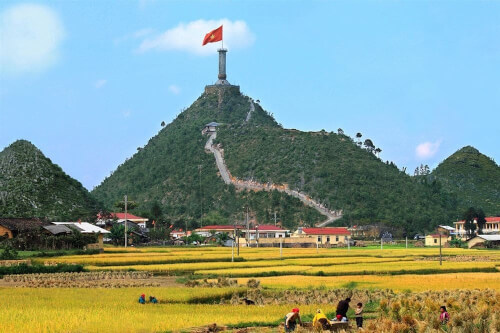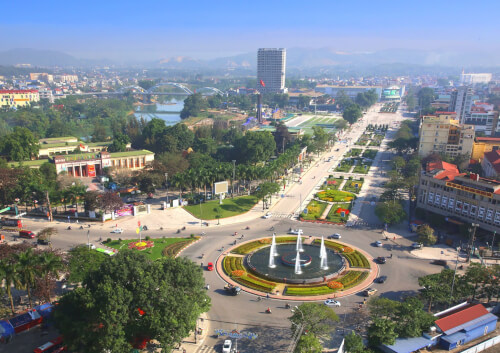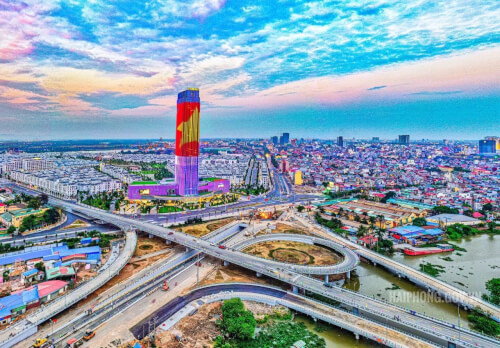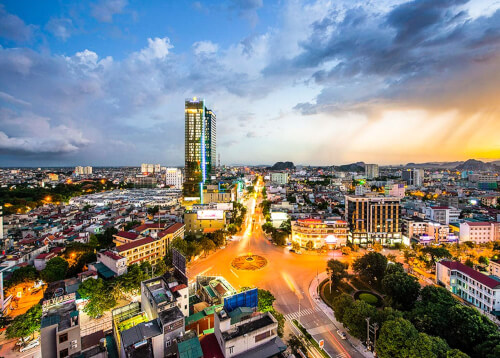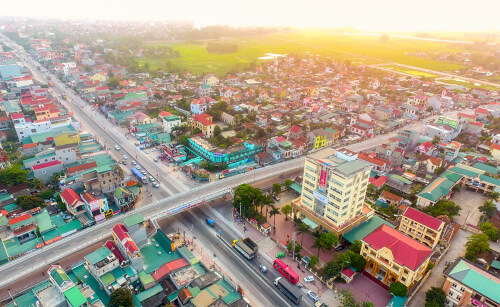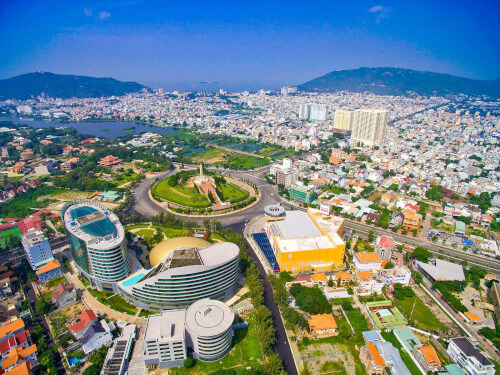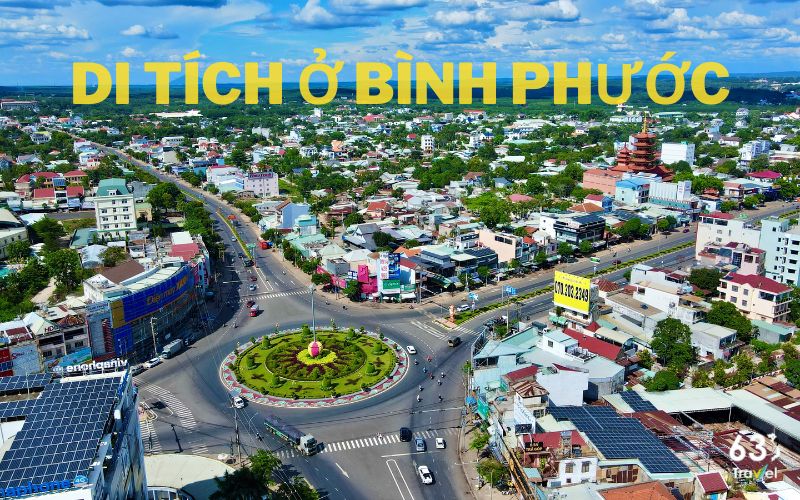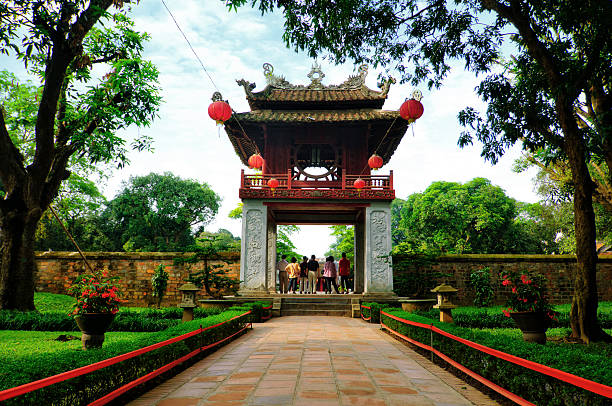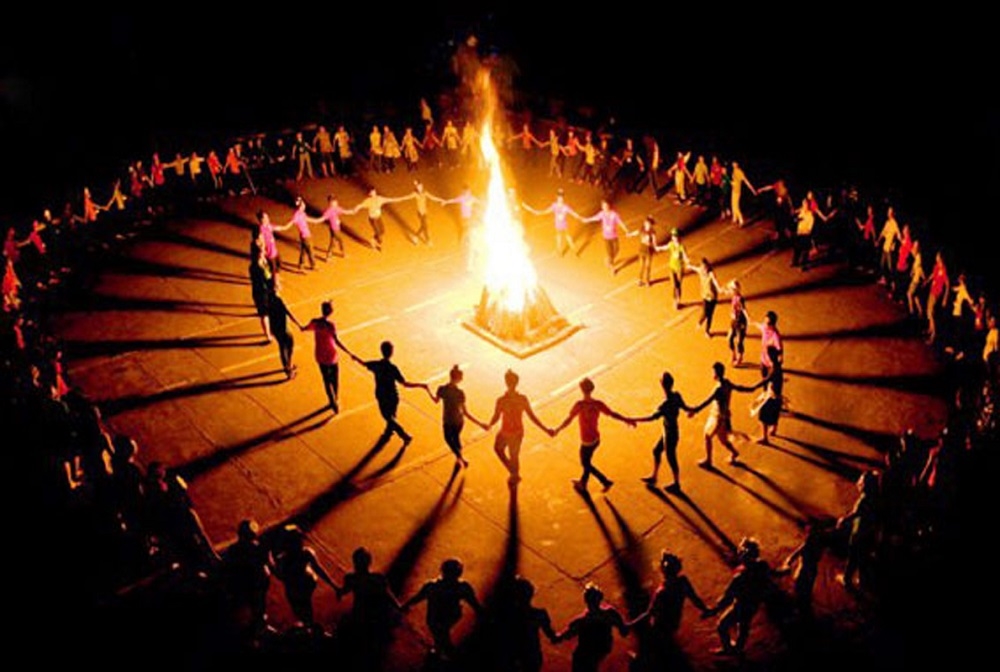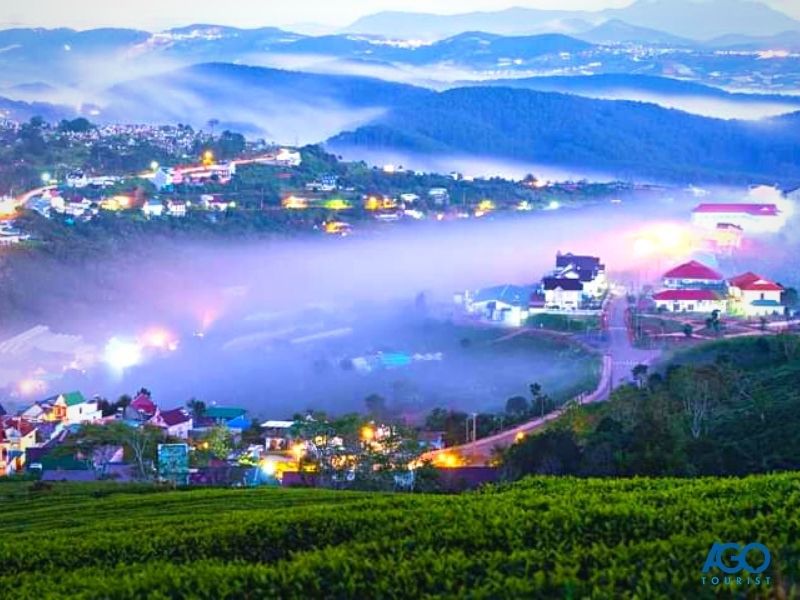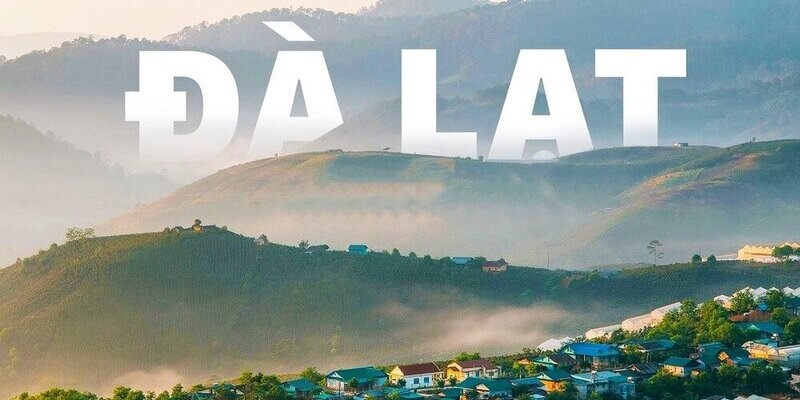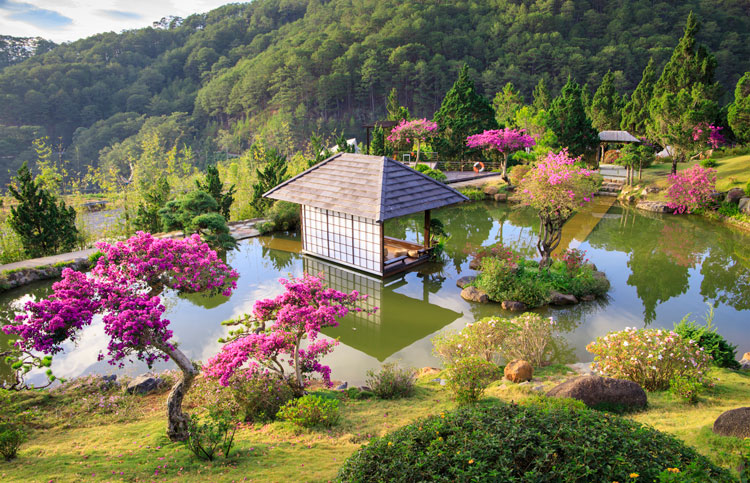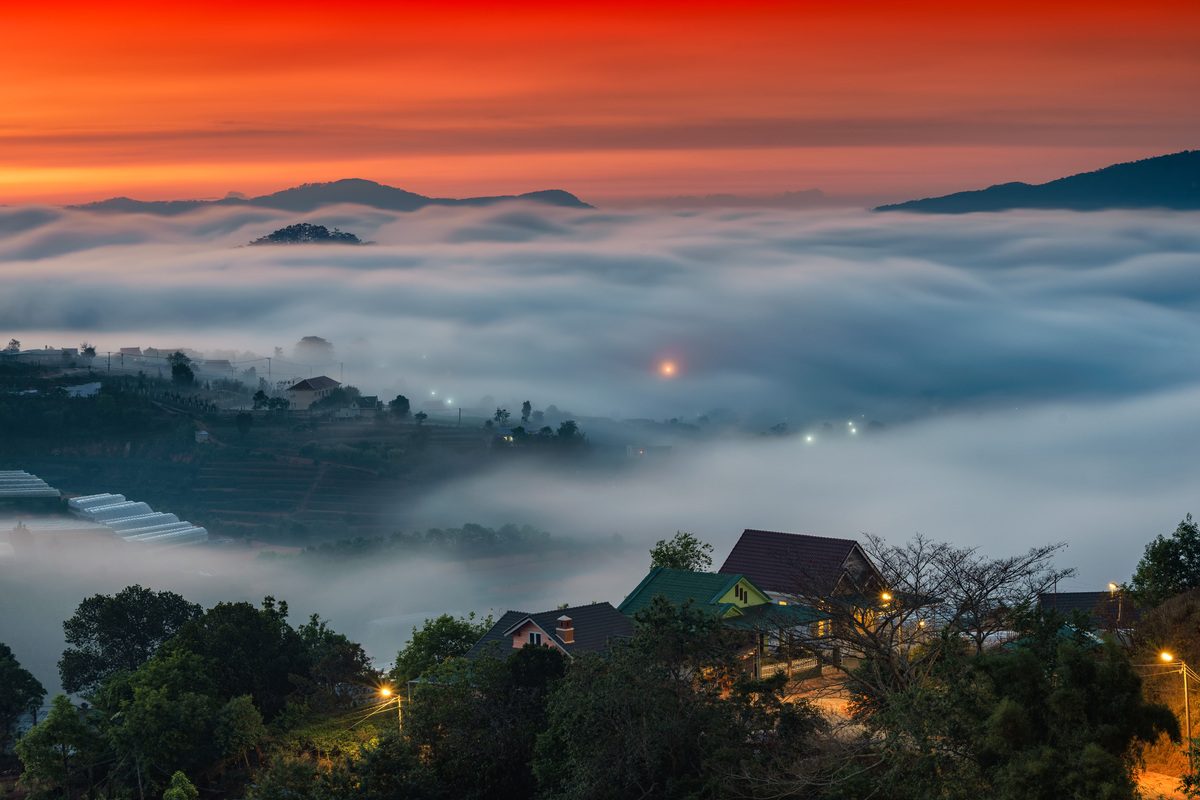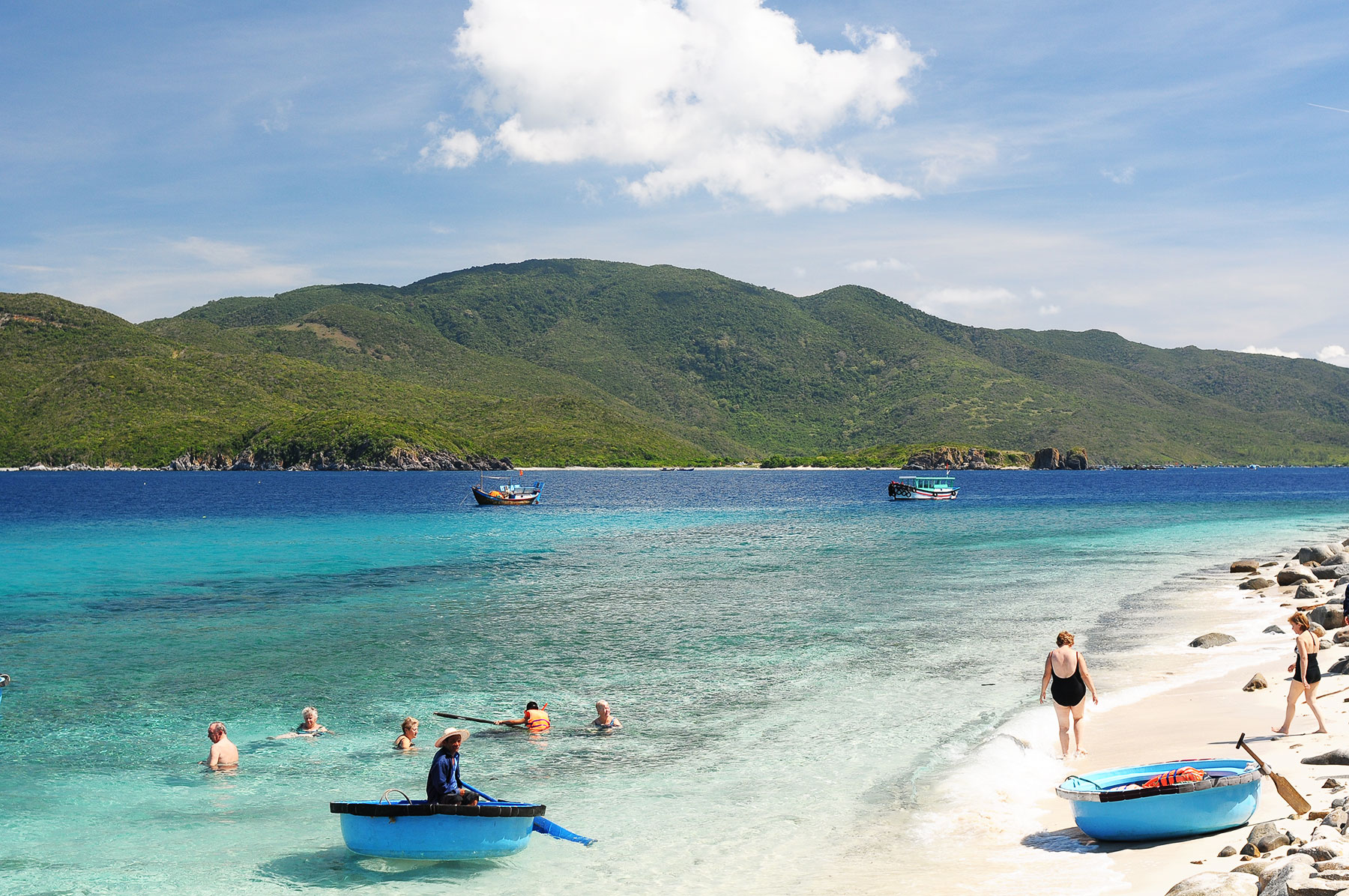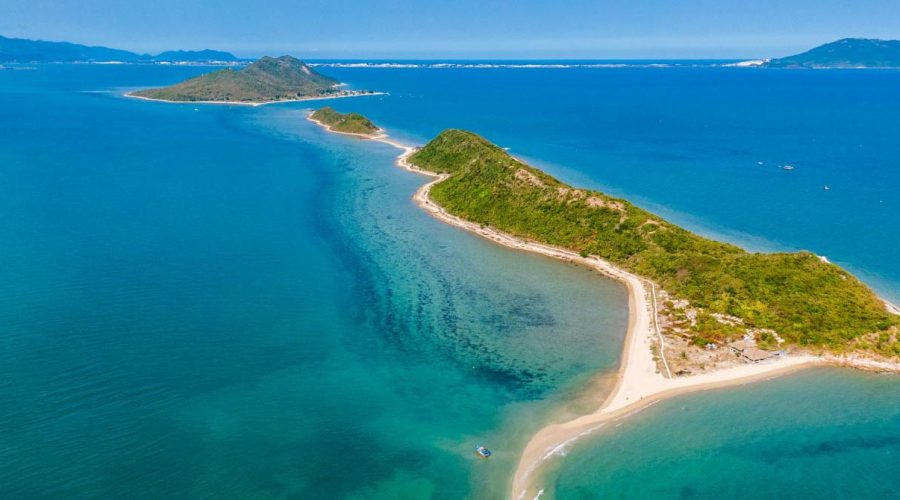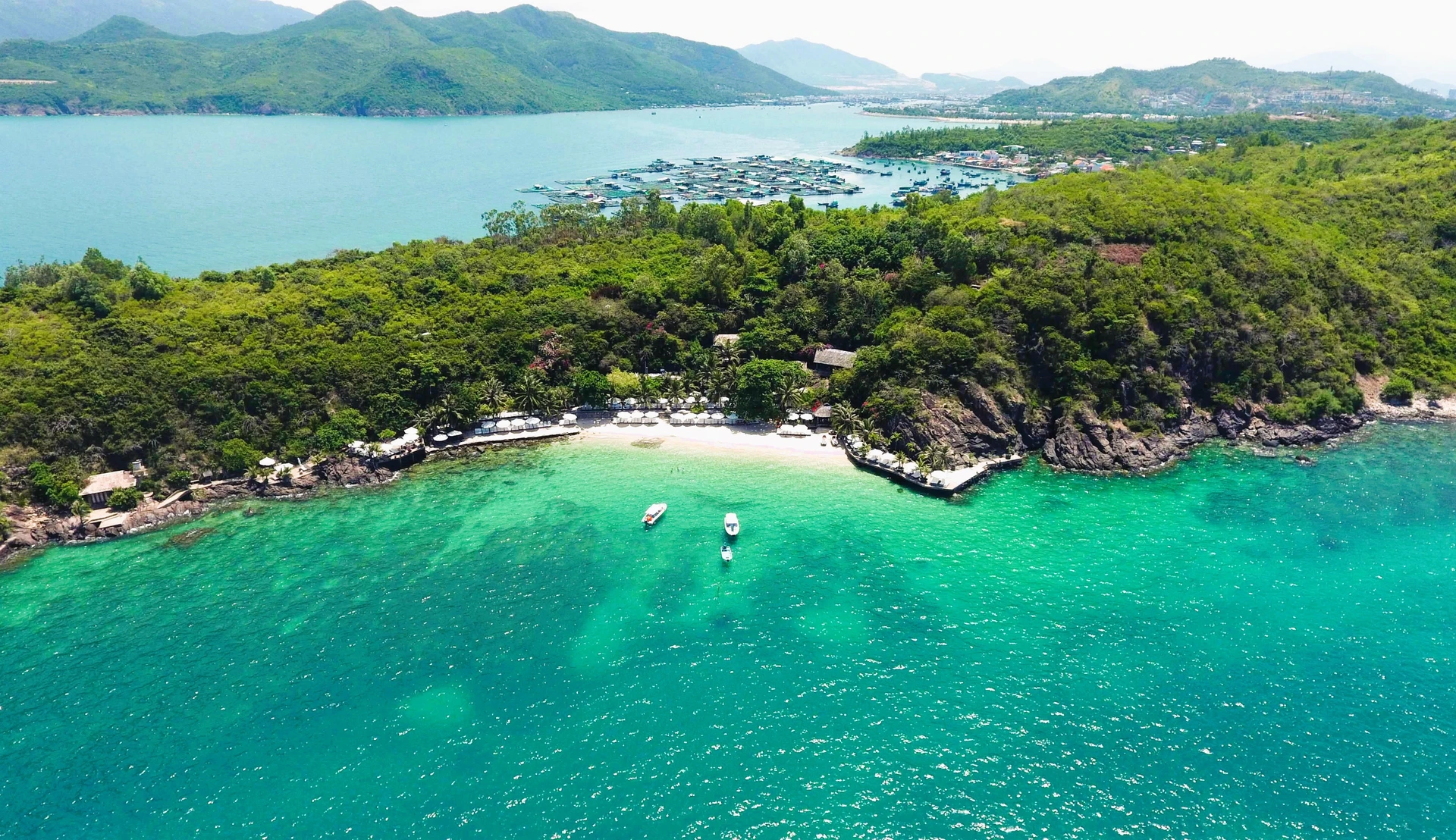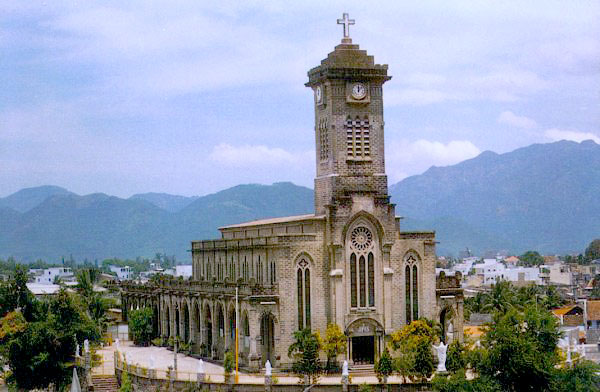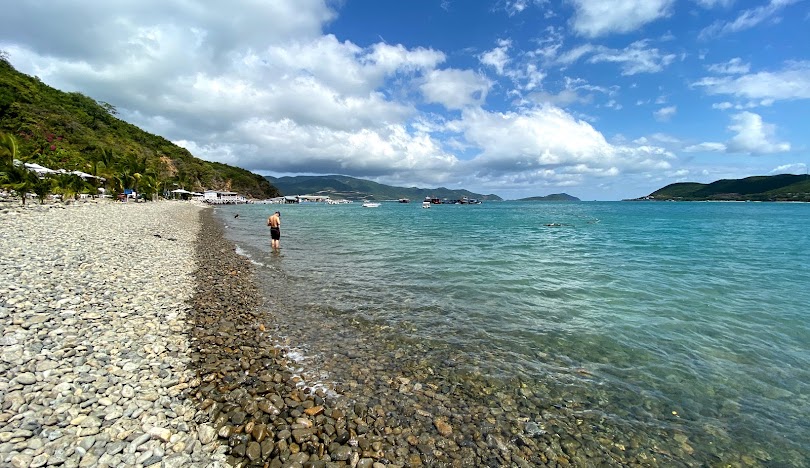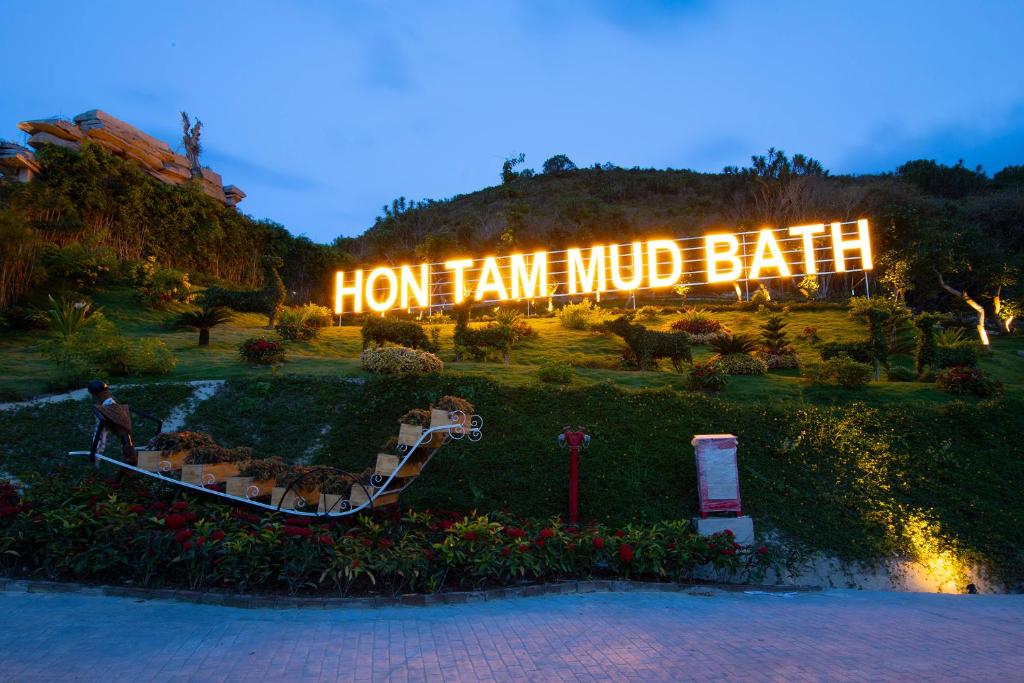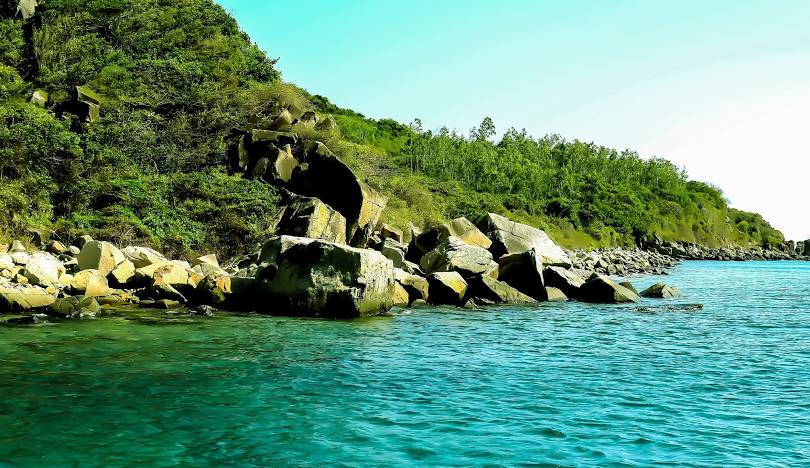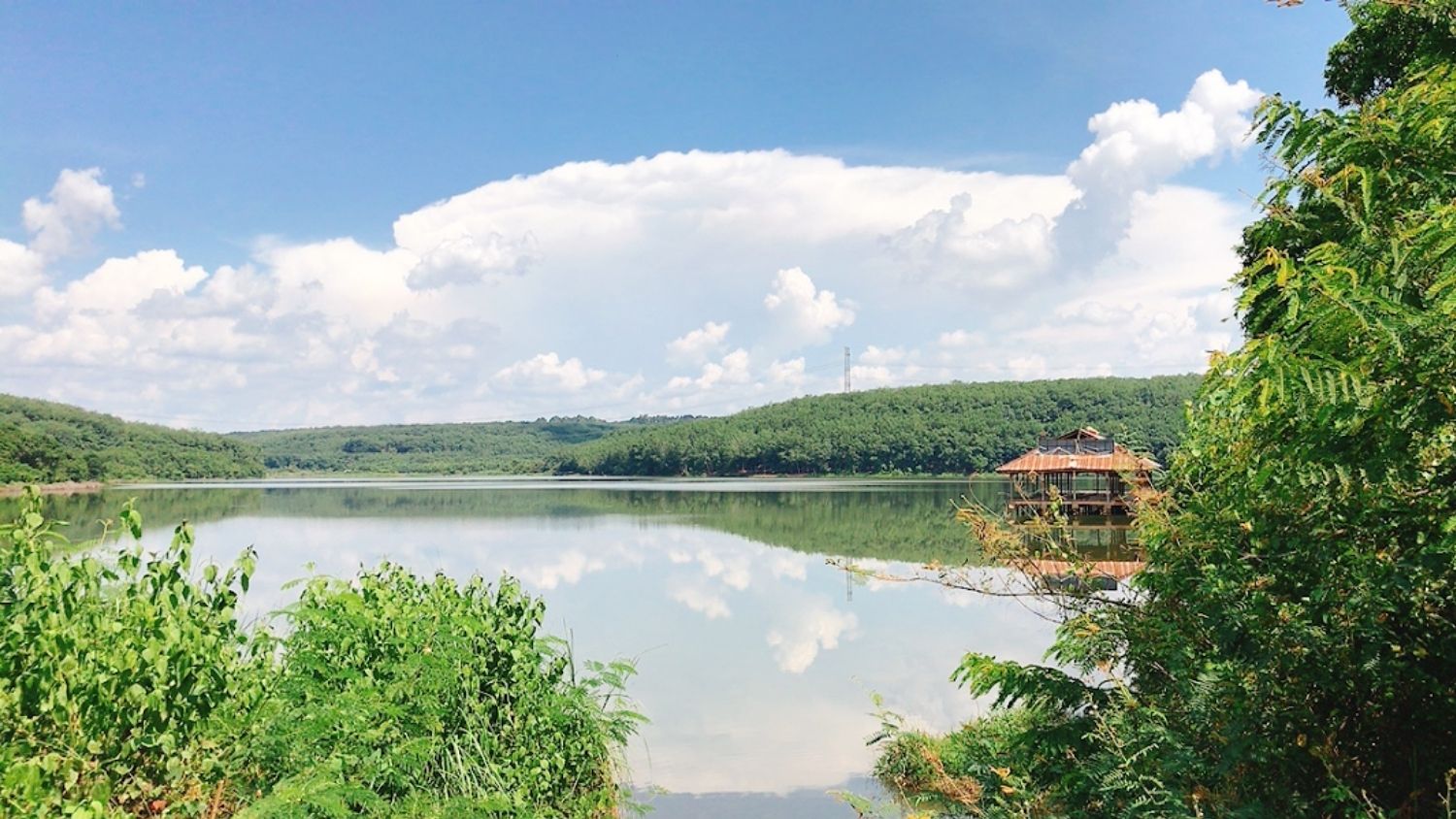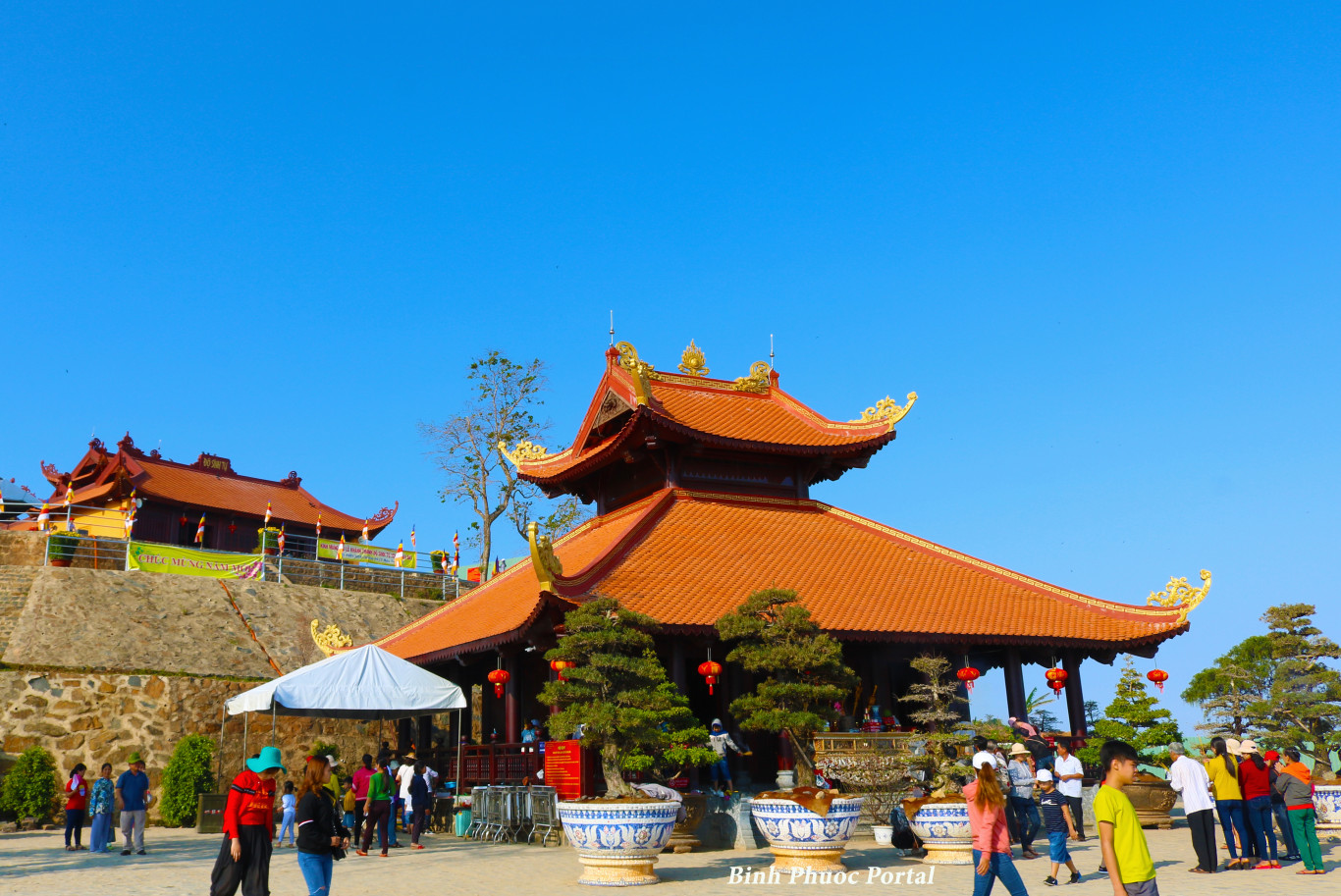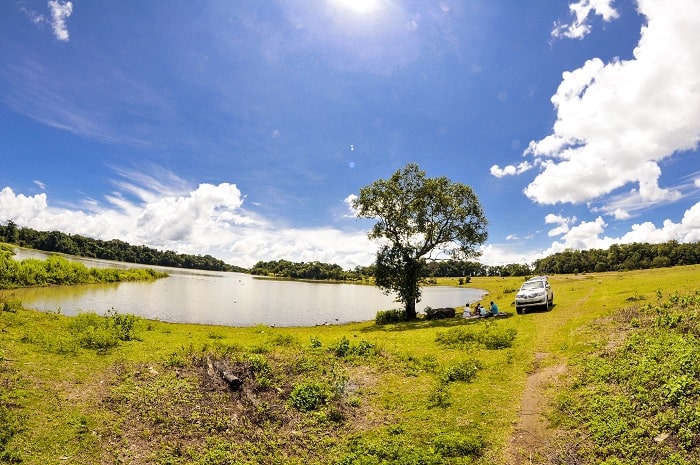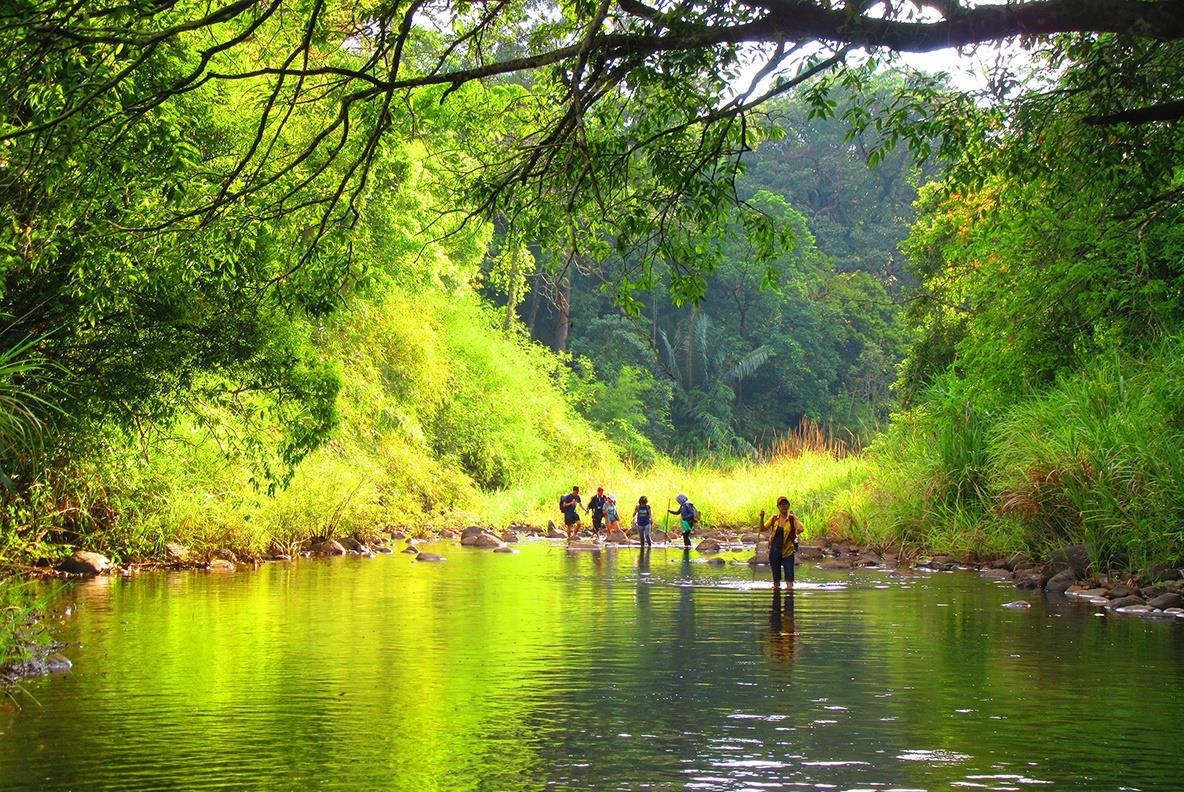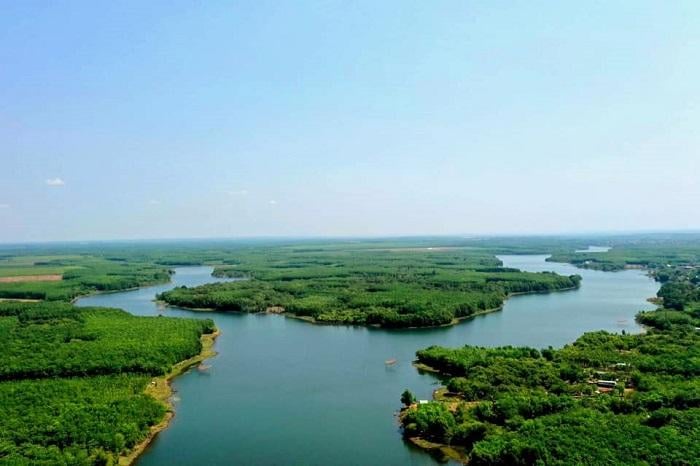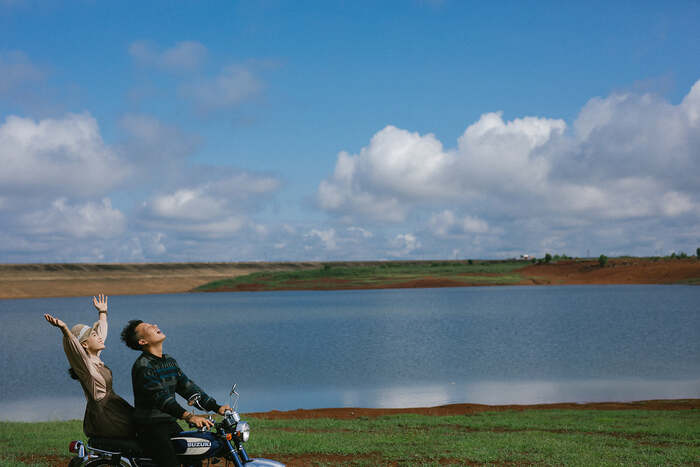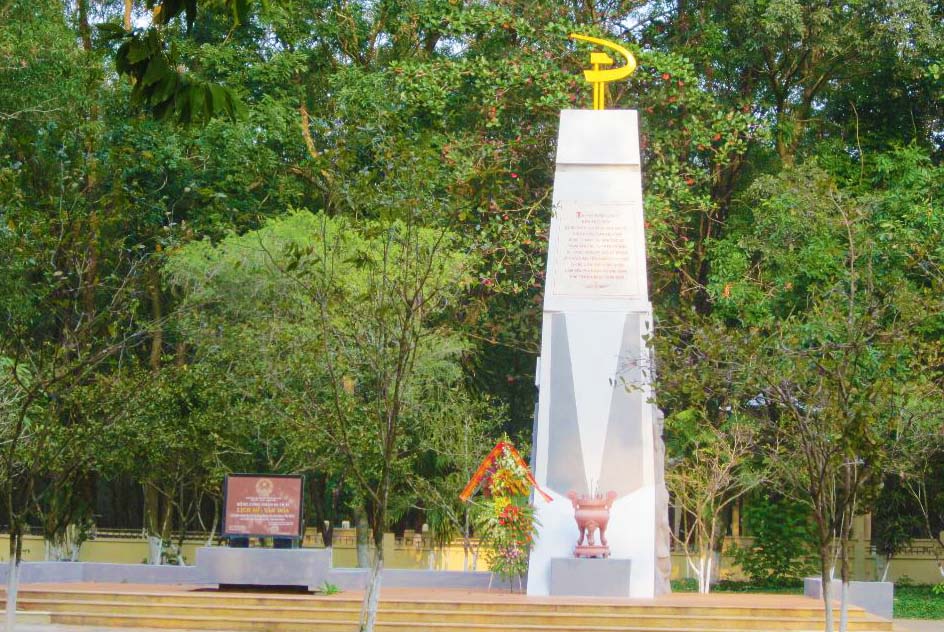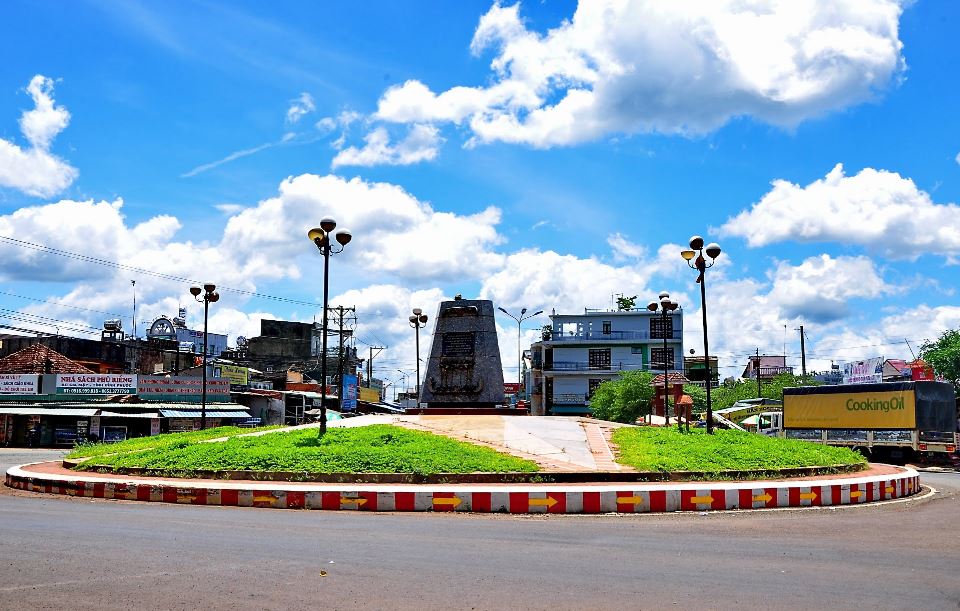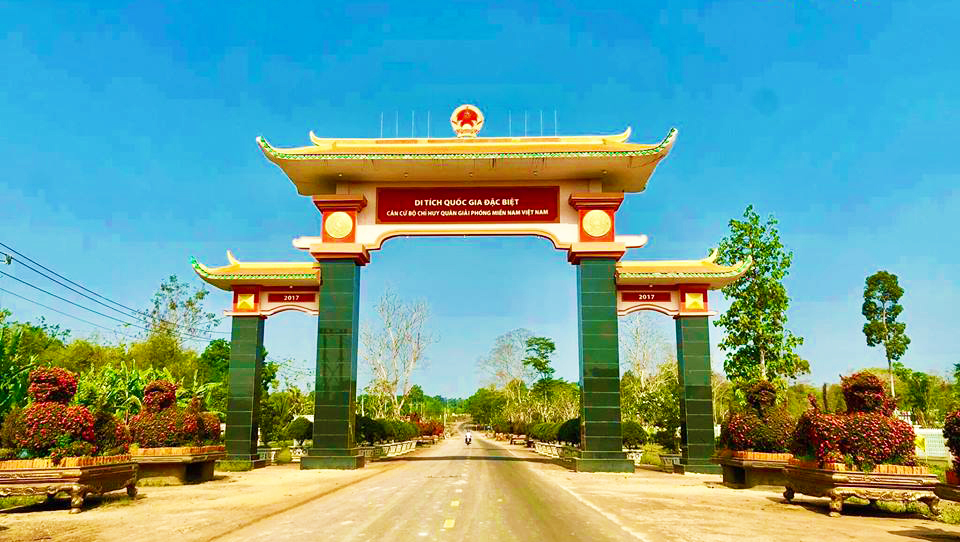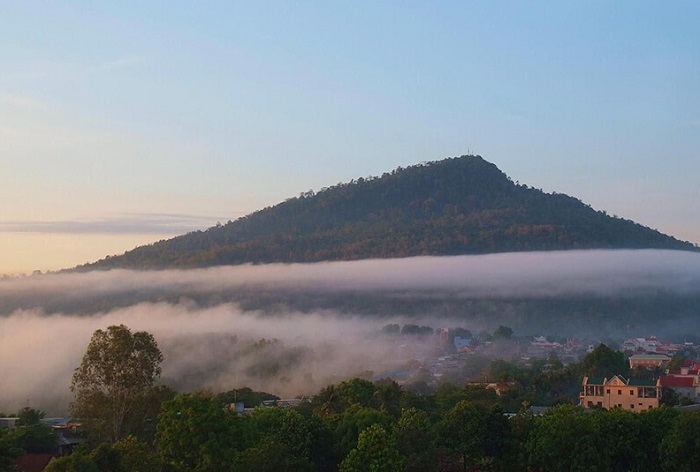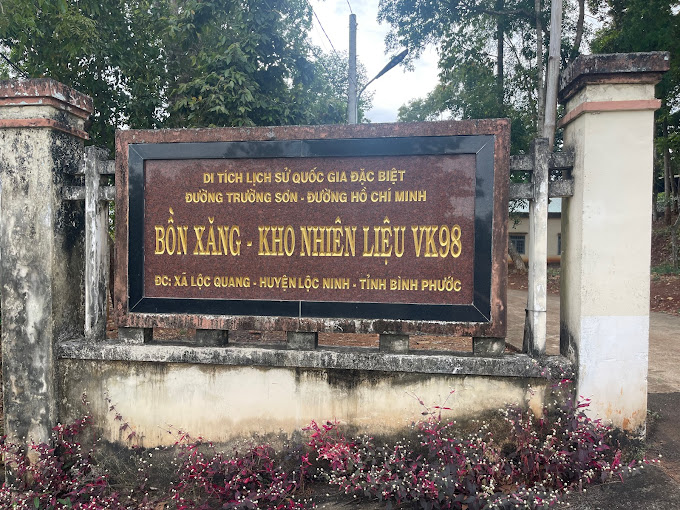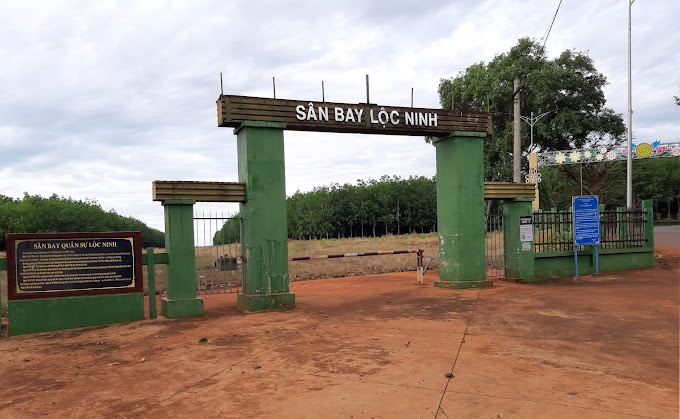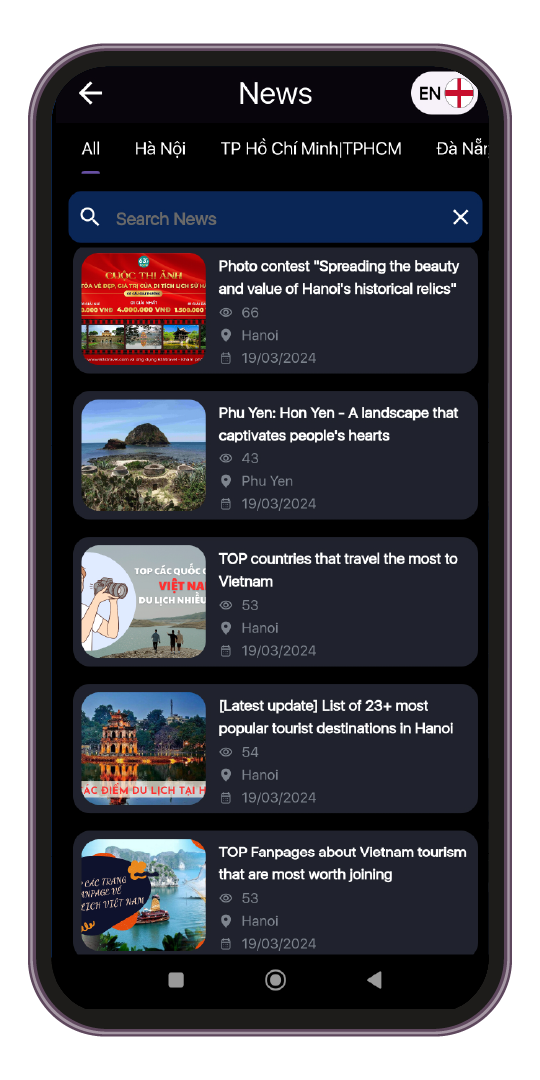Binh Phuoc - a proud land with a heroic history, preserving many valuable historical relics that tourists cannot miss. Exploring historical sites in Binh Phuoc is not only a journey to your roots, but also an opportunity for you to understand more about the history of the nation's resilient struggle.
When mentioning Binh Phuoc, people often remember the vast rubber forests or the wild beauty of nature. However, besides that natural beauty, Binh Phuoc also stands out with historical relics associated with the history of the nation's heroic struggles. Let's explore with 63Stravel the outstanding historical relics of Binh Phuoc through the article below.
Visit 19 long-standing and famous Binh Phuoc historical sites
Following in the footsteps, 63Stravel immediately explores the long-standing historical sites of Binh Phuoc with the list below.
Dong Xoai Victory Site
Dong Xoai Victory Monument is a sacred symbol, erected on the occasion of the 40th anniversary of Dong Xoai's historic victory over the American empire. The work not only engraves glorious victories but also honors the indomitable and heroic spirit of Dong Xoai soldiers and people. With special historical value, this place was recognized as a National Historical Site on December 12, 2014.

Dong Xoai Victory Monument - a historical relic attracting tourists in Binh Phuoc
The relic area has an area of 16,932.88 m², including many outstanding items such as souvenir galleries, victory monuments, relief paintings, green tree systems and fountains. The most prominent is the 21m high monument, delicately carved from marble, depicting the image of three brave soldiers attacking, symbolizing the heroic spirit of historical days. The two reliefs behind the monument vividly recreate the heroic battle, contributing to creating a solemn but proud space.
The area around the monument is covered with cool green trees and a modern lighting system, turning this place into an attractive destination for tourists every time they set foot in Binh Phuoc. Not only a place to visit, Dong Xoai Victory Monument is also a venue for social events, celebrations, rallies and many meaningful cultural activities, becoming an indispensable part of life. spirit of the local people.
Victory location: O Ship Blockade
The Tau O Block Relic is a majestic historical witness, engraved deeply in the hearts of Binh Phuoc people the glorious victories of our people and soldiers during the most fierce period of the Vietnam War. This place has become a symbol of deep gratitude and gratitude to the soldiers who sacrificed for independence and freedom, when thousands of the country's outstanding sons and daughters fell in this land.
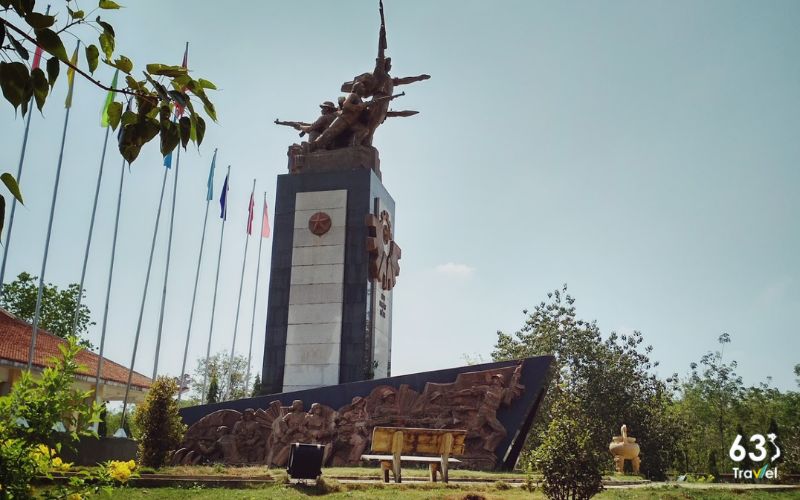
Vessel Blocking Victory Site Relics
The name Tau O originates from the stream of the same name that flows through Highway 13, in Tan Khai commune. During the Nguyen Hue campaign, the Tau O Blocking Point played a key role in the military strategy, when the 7th Division organized a battlefield here to prevent enemy reinforcements from Saigon and firmly protect Loc Ninh district. after being liberated.
Built on an area of 11,451.7m² in 2009, the Vessel Stop Victory Monument includes the Memorial Stele and the Victory Monument, not only a place to commemorate fallen heroes but also a stopping point. meaningful for young generations who want to learn about the nation's history. Each visit here is not only a journey back to the source but also an opportunity to pay tribute to the great sacrifices of our ancestors in the fight to regain freedom.
With profound historical significance, the Tau O Block Relic was ranked as a National Historical Site by the Ministry of Culture, Sports and Tourism in 2012. This place not only attracts history lovers but also gives visitors the feeling of reliving the heroic years of the nation.
Soc Bom Bo
Soc Bom Bo not only offers the opportunity to explore unique cultural beauty but is also a place to preserve the heroic history of the nation. This place is associated with the years of resistance against the US, and is a symbol of the indomitable spirit of the S'Tieng people.
When coming to Soc Bom Bo, visitors will not only listen to emotional historical stories but also have the opportunity to experience the rich cultural life and rich identity of the S'Tieng people, from customs to traditions. daily living activities. This is definitely an interesting destination, bringing both unique historical and cultural values.
Location of establishment of Indochina Communist Party Cell in Phu Rieng
The relic of the establishment of the Indochina Communist Party cell in Phu Rieng is a historical symbol marking an important stage in the revolutionary movement of the Southeast rubber working class. On October 28, 1929, here the Indochina Communist Party Cell (Phu Rieng Cell) was born, with comrade Nguyen Xuan Cu as Secretary, marking the appearance of the first Party organization of the high industry. Vietnamese rubber.

Location of the establishment of the Indochina Communist Party Cell in Phu Rieng - Ranked as a National Monument
Phu Rieng was once a large rubber plantation belonging to the Michelin Company - where thousands of workers were brutally exploited under French colonial rule. Faced with that situation, revolutionary cadres, typically comrade Nguyen Xuan Cu, came here to lead the workers in the struggle. The Phu Rieng cell quickly organized many planned struggles, most notably the strike of 5,000 workers in 1930, creating the famous "Phu Rieng Do" event, greatly contributing to the movement. struggle of the Vietnamese working class.
With great historical value, the relic was recognized as a national historical relic by the Ministry of Culture and Information in 1999. Today, this place is not only a destination to review revolutionary traditions but It is also a pride in the contributions of rubber workers in the cause of national independence. The relic was restored and embellished, becoming a symbol of the strong vitality of Binh Phuoc - the "white gold" land of rubber stretching vast.
>> See more: You must definitely visit 17 tourist destinations in Binh Phuoc that make many people fall in love
Ba Ra Mountain – Mo Waterfall
Ba Ra Mountain - Mo Thac in Binh Phuoc, is one of the three highest mountains in the Southeast region with an altitude of 723m above sea level, outstanding with rugged terrain and associated with many heroic historical events. of the nation. Known not only for its heroic anecdotes, Ba Ra Mountain is also an attractive tourist destination with beautiful natural scenery, including Be River, Me Waterfall, and rich flora.
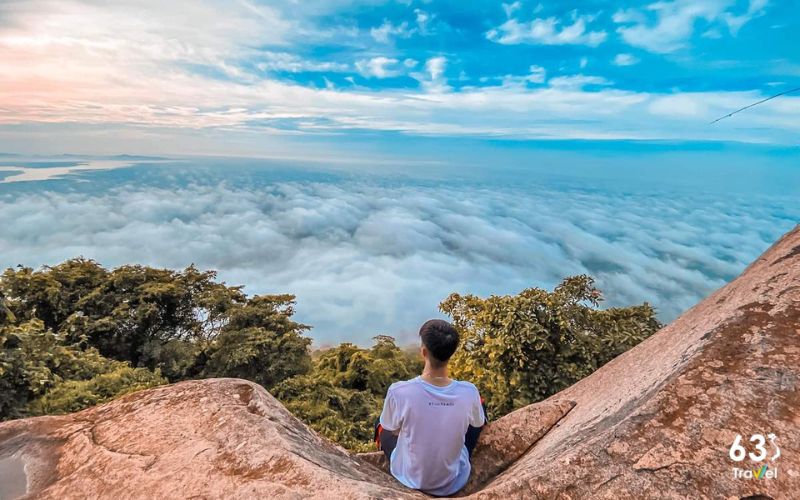
Traveling to Ba Ra Mountain - Mo Waterfall in Binh Phuoc to experience mountain climbing and beautiful scenery
During the period from 1925 to 1941, the French colonialists built at the foot of Ba Ra mountain a large prison with three military camps, where political prisoners and people suspected of being communists were detained. Currently, on the top of the mountain there are still traces of the airport built by the US during the war. Bang Lang Hill area, part of the relic complex, is also where the stele house and temple commemorate the soldiers who died in the resistance war.
For young people who love to explore, trekking Ba Ra Mountain is an experience not to be missed. From the foot of the mountain, you can travel by car or try the cable car journey to admire the panoramic view of the mountain. In addition, Ba Ra Temple (Linh Son Temple), located in the relic complex, is where festivals take place on the 1st-4th days of the third lunar month, attracting a large number of tourists to visit and express their sincerity. glasses.
Historical relic of French colonial rubber garden
The French colonial rubber garden exhibition area is recognized as a provincial-level revolutionary historical relic, a prominent tourist destination of Binh Duong, besides landmarks such as Vinh Phuoc Communal House and Long Hung To Pagoda. This is a place that preserves painful memories of the brutal exploitation that the Vietnamese people suffered during the French colonial period.
At the beginning of the 20th century, the land of Dinh Hiep, Dau Tieng, with favorable climate and soil, became a rubber plantation of Michelin company. Thousands of workers were forced to work in harsh conditions, leading to many rights struggles, most notably the 1933 strike of more than 2,000 rubber workers. This struggle forced the plantation owners to make concessions.
Today, when visiting the ruins, you can see ancient rubber trees and historical artifacts, including rubber workers' houses, latex processing factories, and labor tools. The exhibition area also recreates the daily life scenes of rubber workers, helping visitors better understand their miserable lives.
Vivid images such as a worker tapping latex or a family of rubber workers holding a year-end ceremony make you feel like you're returning to a painful time for the nation. This is also clear evidence of the exploitation that To Huu portrayed through the poem: "Sell your body for a few coins. Flesh and bones are buried under several floors of rubber tree..."
The uprising of the S'tieng people - Phu Rieng commune against the French colonialists
The relic of the uprising of the S'tieng people - Phu Rieng commune against the French colonialists on October 25, 1933, also known as "The West's Grave", is located at Phu Rieng intersection, Phu Rieng district, Binh Phuoc. This is the place that marked an important historical event when the S'tieng people stood up against the cruel rule of the French colonialists.
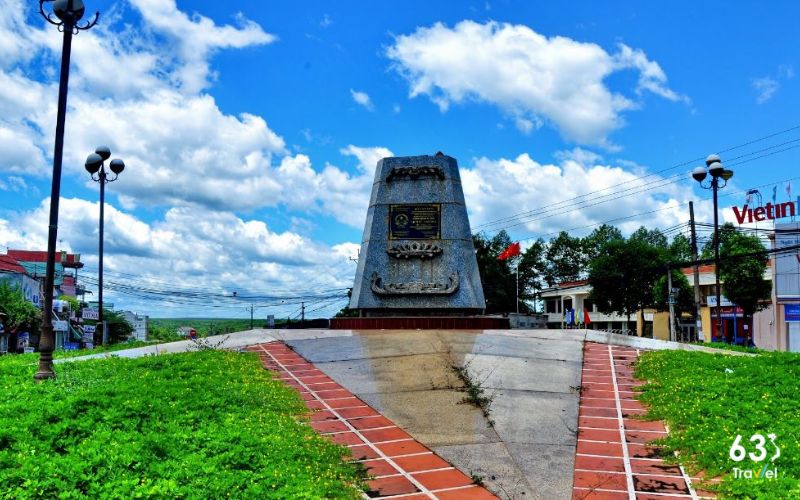
Relics of the Uprising of the S'tieng people - Phu Rieng commune against the French colonialists
In the early 20th century, the French colonialists exploited rubber in Ba Ra district (now in Binh Phuoc), turning this land into a place of torment for indigenous people, especially the S'tieng people. France's brutal policies have exhausted the labor force and destroyed the dignity of the people here, making them unable to endure any more.
On October 25, 1933, under the leadership of two brothers Dieu Mon and Dieu Mot, about 200 S'tieng youth organized an ambush and destroyed District Chief More - the head of the colonial government in the area. . This uprising has become a historical milestone, demonstrating the resilient spirit of the S'tieng people.
After the uprising, the French colonialists set up a memorial stone to commemorate More, but for the Vietnamese people, this was a resounding victory, engraved deeply in the hearts of the Ba Ra people. This uprising not only had great significance to local history but also educated patriotism and the nation's spirit of fighting for independence. On May 29, 1989, this relic was ranked by the Ministry of Culture as a National Historical Monument, recognizing the historical value and indomitable fighting spirit of the S'tieng people.
Phu Loi Binh Duong Prison
Phu Loi Prison is 77,082m² wide and was recognized as a National Historical Site on July 10, 1980. This is one of the largest prisons of the US - Diem regime in the Southeast, operating from 1957 to 1964, and is a testament to the crimes of the US - Puppet government against patriots.
Phu Loi Prison is known as "hell on earth" because of its brutal torture, harsh living conditions and prisoner exploitation policy. Revolutionary soldiers and patriots detained here had to endure all hardships, from lack of food to hard labor. Even so, their patriotism and courage were never defeated.
The prison was renovated from a military base left by France and Japan. After that, the US and the puppet government expanded it into a detention and re-education center, applying brutal suppression measures to destroy the revolutionary forces. The prison architecture includes administrative areas, soldiers' family areas and the detention area "An Tri Vien", with three large camps: Chi Lang, Bach Dang and Dong Da. Each camp has a strict security system with barbed wire fences, solid walls and blockhouses guarded day and night.
Today, Phu Loi prison welcomes many visitors to learn about the history of the struggle of the Vietnamese people. This is a place that preserves the memory of the indomitable patriotism and sacrifice of revolutionary soldiers. Visitors to Binh Duong can combine visits to other relics such as Vinh Loi war zone, Bau Bang victory monument and Phuoc Thanh Provincial Governor's Palace.
Loc Ninh Military Airport
Loc Ninh military airport has an area of 50,000m² and was built by the US and Wei on March 10, 1965. Initially, the airport was assembled with iron grilles (Tec-nich) to serve the supply of food, ammunition and transporting war vehicles to the Loc Ninh area - Cambodia. However, over time, the airport has degraded, only the runway remains.
After Loc Ninh was liberated on April 7, 1972, the airport became a place marking many important historical events. On January 31, 1973, Lieutenant General Tran Van Tra led the military delegation of the Provisional Revolutionary Government to fly to Saigon to attend the first meeting of the Four-Party Military Joint Committee. On February 12, 1973, a ceremony to return 27 American officers, soldiers and military personnel took place here, marking the painful end of a period of war.
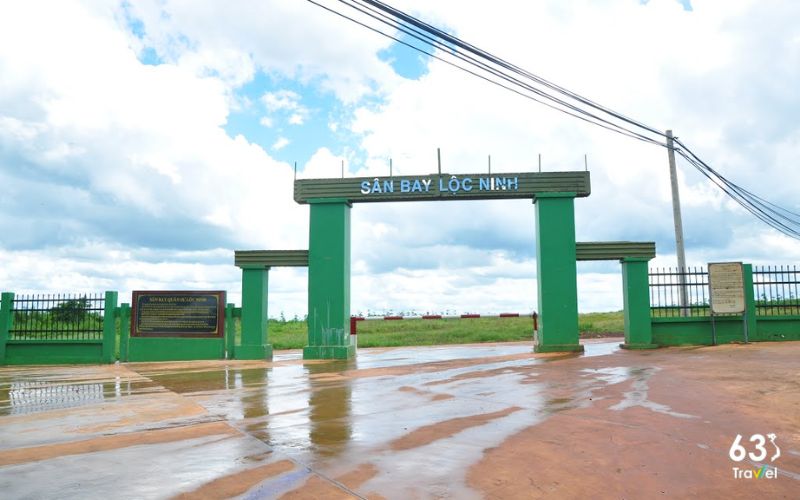
Loc Ninh military airport historical site
During the period from February 12 to March 28, 1973, this airport was one of six locations where prisoners of war were returned, a total of 26,492 people were released. The image of Ms. Vo Thi Thang, a female student who fought for independence, smiling brightly as she stepped off the airport, has become an unforgettable symbol, reminiscent of the unremitting efforts of revolutionary soldiers. .
On September 12, 1973, the airport was also the place to welcome the International Commission delegation and visiting ambassadors and deputy heads of delegations. Today, many tourists, especially Americans, come here to remember the "Loc Ninh of that day", a past that will never fade. Loc Ninh Military Airport was recognized as a national historical relic on December 12, 1986.
Dinh Tan declared
Tan Khai Communal House was recognized as a Provincial Historical Site on August 18, 2014, and is one of the important temples in Binh Phuoc. Built in 1901, the communal house not only worships Thanh Hoang Bon Canh but also commemorates the first colonists who established a hamlet here.
The formation of Tan Khai is associated with 10 households from Tan Khanh - Ba Tra, of which the Huynh and Tran families stand out. They had great contributions in exploring the land before Tan Khai village was officially established in 1912. The name "Tan Khai" means the people from Tan Khanh who came to reclaim the village.
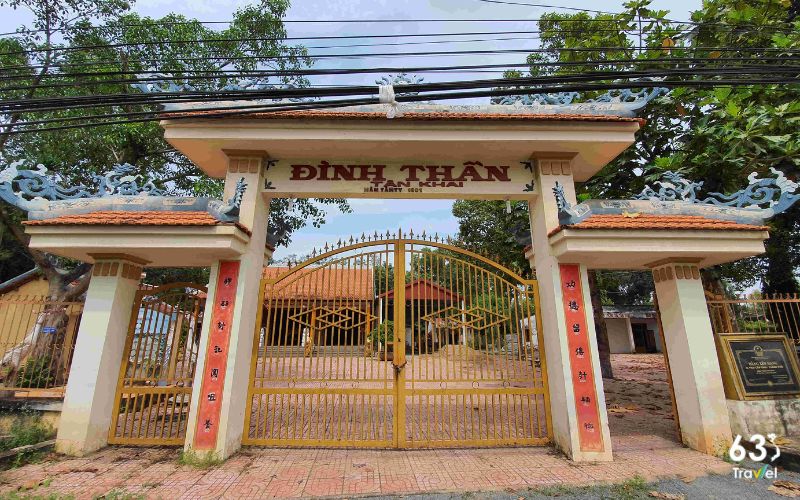
Dinh Tan declared
The architecture of Tan Khai communal house is influenced by Bung Cu communal house - a relic dating back more than 200 years ago in Binh Duong. When the first settlers arrived, they brought culture from Tan Khanh and preserved it to this day. The communal house was completed and the village God Emperor was brought from Bung Cu to worship.
Experiencing many upheavals during the resistance war against the US, Dinh Tan Khai still stands firmly as a historical witness, despite having been relocated 11 times and destroyed many times. Today, the communal house is located on a land area of 2,783m² with many structures such as the Main Hall, Lecture House, and elaborately decorated screens.
The communal house is not only a place of worship but also a cultural center of the community. Major festivals such as Ky Yen Festival (March 18 of the lunar calendar) and Cau Bong Festival (August 18 of the lunar calendar) are held here, praying for peace and prosperity. In particular, the buffalo fighting festival at Tan Khai communal house has a unique feature, where the buffaloes are cared for after fighting and are not sacrificed.
Soc Lon Pagoda
Soc Lon Pagoda is one of the oldest Khmer pagodas in Binh Phuoc province. Construction began in 1931 and inaugurated in 1937. Since 1954, the pagoda has become a cultural and religious center for the Khmer community in Loc Khanh commune.
This place also has a historical mark, having harbored many revolutionary soldiers during the resistance war against France and the United States despite suffering three B52 bombs that caused heavy damage to the main hall. In 2009, the pagoda was restored with a new look but still retains its original beauty.
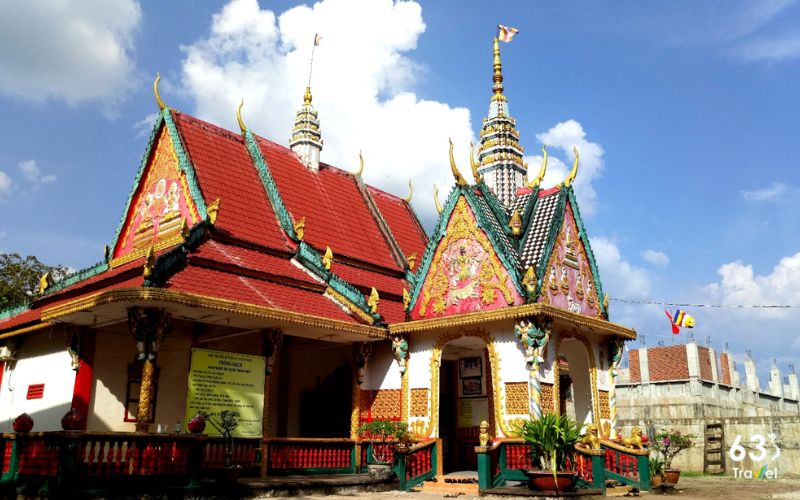
Soc Lon Pagoda, Binh Phuoc, unique Khmer culture
Soc Lon Pagoda represents the traditional architectural style of the Khmer people, mainly worshiping the statue of Buddha Shakyamuni, harmoniously combining landscape and architecture. The temple grounds include the main hall, worship tower, Sala lecture hall and study areas.
The temple gate is exquisitely designed, 3m wide and 5m high, with typical Buddhist motifs. From the gate leading to the meeting house (Sala) is a spacious road, with the Sala built in the East - West direction, where offerings and ceremonial activities take place.
Sala lecture hall has two floors: the ground floor is used as a ceremony house, the upper floor is used as a living room. Outside the Sala, Garuda statues supporting the roof pillars symbolize the strength of unity. The columns are decorated with patterns of deities, expressing solemn beauty.
The pagoda is also a major cultural center, organizing many special festivals such as Lunar New Year, Summer Festival, Dolta Festival and Buddha's Birthday. In addition, volunteer activities regularly take place at the temple. The Bodhi Tower, with its unique pyramidal design, worships the Brahma statue, encouraging people to do good and avoid evil.
>> Should see: 15+ famous historical sites in Binh Duong don't miss
Binh Phuoc Museum
Binh Phuoc Museum is an important center in preserving and promoting cultural heritage. The Museum includes a Board of Directors and four specialized departments: Administration - General, Conservation Operations, Heritage Display and Exploitation, and Museum Operations.
After the impact of the Covid-19 epidemic, the Museum has made efforts to attract children and parents with useful fun activities, encouraging the discovery of historical culture through interesting scientific experiences. More than 4,000 teachers and students have participated in educational programs here, contributing to raising awareness of local history and culture.
The museum is open from 8:00 a.m. to 11:30 a.m. and 1:30 p.m. to 5:00 p.m., creating favorable conditions for visitors. Activities using modern technology such as virtual reality and 3D have enriched the experience, helping viewers clearly feel the value of cultural heritage.
Displays at the Museum focus on two main contents: culture and history of Binh Phuoc. With artifacts reflecting the lives and customs of indigenous peoples, especially the rice offering festival of the M'nong people.
By applying advanced technology, the Museum has created attractive exhibition spaces with clear captions and subtle lighting, bringing a vivid experience to visitors. With more than 15,000 artifacts, Binh Phuoc Museum constantly affirms its role in preserving and promoting the unique cultural values of this land.
Headquarters of the Provisional Revolutionary Government of the Republic of South Vietnam
Loc Ninh - one of the areas that witnessed many fierce battles in history, was once the capital of the Provisional Revolutionary Government of the Republic of South Vietnam (CPCMLTCHMNVN) and the end point of the Ho Chi Minh Trail. On April 7, 1972, Loc Ninh became the first district to be liberated in the South, marking the formation of political and military agencies here, including the House of Exchange, which welcomed delegations. diplomatic.
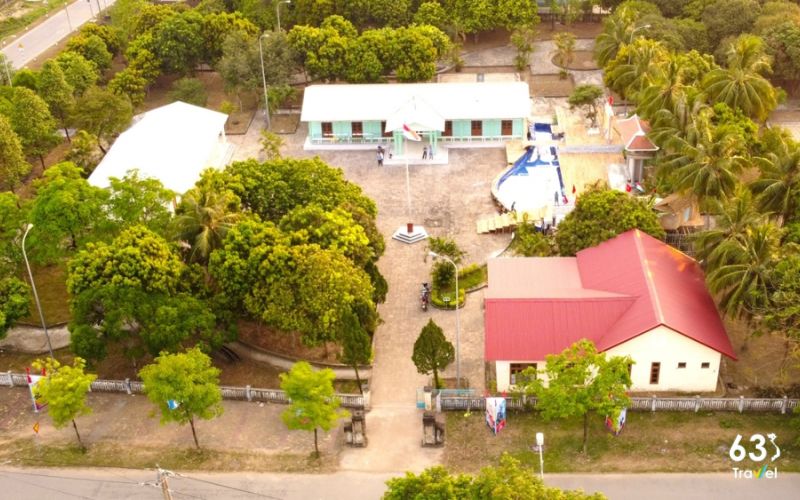
Headquarters of the Provisional Revolutionary Government of the Republic of South Vietnam
Originally, the house was built in 1911 for the French rubber company, which was destroyed during the Nguyen Hue campaign. In March 1973, the CPCMLTCHMNVN decided to build a new headquarters on the old building, with a modern design and diplomatic reception function. The building consists of two floors, the ground floor is made of concrete for meetings and the upper floor is made of wood designed in the style of a reception room.
This was where a four-party military conference took place in 1973, discussing the terms of the Paris Agreement, with the participation of military representatives from the Communist Party of Vietnam, the Republic of Vietnam, the US military and the National Committee of the People's Republic of Vietnam. international. The layout of the conference was like a round table, demonstrating equality between the parties, while also emphasizing the failure of American imperialism in the struggle for independence.
The House of Foreign Affairs is not only a historical relic, but also a symbol of resilience and ingenuity in the fight to protect the country. Recognized as a National Historical Site on December 12, 1986.
Grave of 3,000 An Loc compatriots massacred by the US imperialists on October 3, 1972
The Tombs of 3,000 people relic site in Binh Long Town is a painful testament to the war, marking the great loss of local people. This is not only a famous attraction like Bu Dang Elephant Waterfall but also a mass grave for 3,000 people who died during the Nguyen Hue Campaign period, which lasted for 32 days and nights.
The fierce war between the Southern Liberation Army and the Army of the Republic of Vietnam left thousands dead. After the war ended, the Republic of Vietnam used bulldozers to bury the dead, creating a mass grave. On April 2, 1975, Binh Long was liberated, and on April 1, 1985, the grave site was officially recognized as a cultural and historical relic, engraved with the crimes of the US and Puppet.
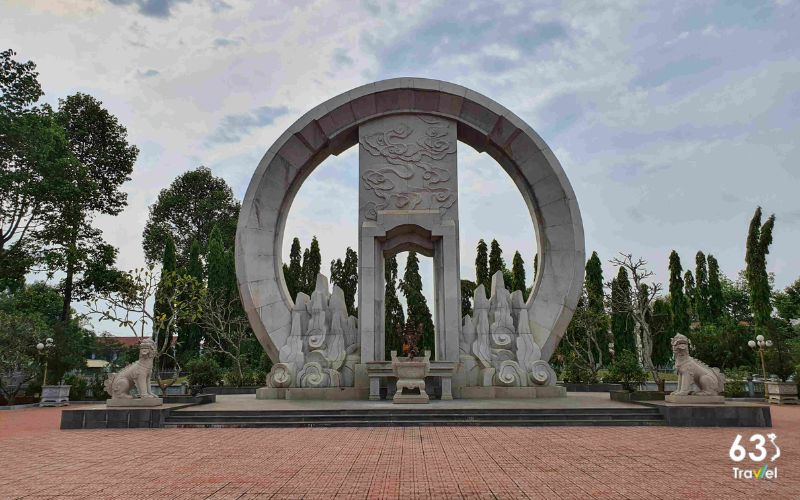
Grave of 3,000 An Loc compatriots massacred by the US imperialists on October 3, 1972
On June 11, 2012, Binh Phuoc province approved a project to renovate the relic site, expressing humanistic significance and educating patriotism. The renovation project officially started on July 1, 2013, with a large scale and a budget of nearly 1,000 billion VND.
The relic area has an area of 4,309 square meters, including many items such as a 12.6 meter high memorial made of natural stone, a large tomb area and works to serve tourists. After visiting, you can continue to explore Standing Waterfall, which offers impressive wild beauty.
Base of the Command of the Liberation Army of South Vietnam
The South Vietnam Liberation Army Command base (also known as Ta Thiet base) is an important historical site in the two resistance wars against the French colonialists and the American imperialists. This place is not only the military base of the Command of the Saigon Liberation Campaign but also plays a key role in the military activities of our army and people, contributing to the glorious victory of the Ho Chi Minh Campaign. .
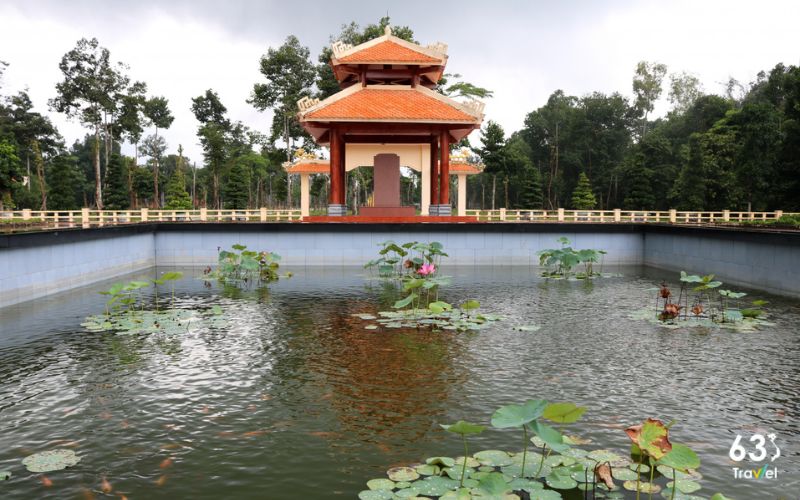
South Vietnam Liberation Army Command Base (Ta Thiet Base)
Known as the "Government Forest," Ta Thiet base is where the Military Commission and Command of the Southern Liberation Force stationed, discussed and planned strategies. After Loc Ninh district was liberated in 1972, this base became the focus of many important military activities.
Before the Ho Chi Minh Campaign in the Spring of 1975, Ta Thiet was built on a large scale with a system of tunnels, trenches and sturdy training areas. You can explore relics such as Giao Ban tunnel, Hoang Cam kitchen and General Tran Van Tra's house. A day here will bring you a lot of useful knowledge about history and patriotism.
VK98 fuel storage tank
VK98 Gasoline Tank - Fuel Warehouse relic is located in Loc Quang commune, Loc Ninh district, Binh Phuoc province, belonging to the special national relic system of Truong Son Road - Ho Chi Minh Road. The warehouse was built in 1974, on an area of 10 hectares around hill 117, with 7 tanks, each tank has a capacity of 250,000 liters, total reserves of up to 1,750,000 liters.
The tanks are made of steel and buried underground, 10m in diameter and 3.5m high, arranged in a triangular shape and protected by forest trees and piles. The pipeline system connecting the tanks allows gasoline to flow naturally, making transportation from VK96 Bu Gia Map station convenient.
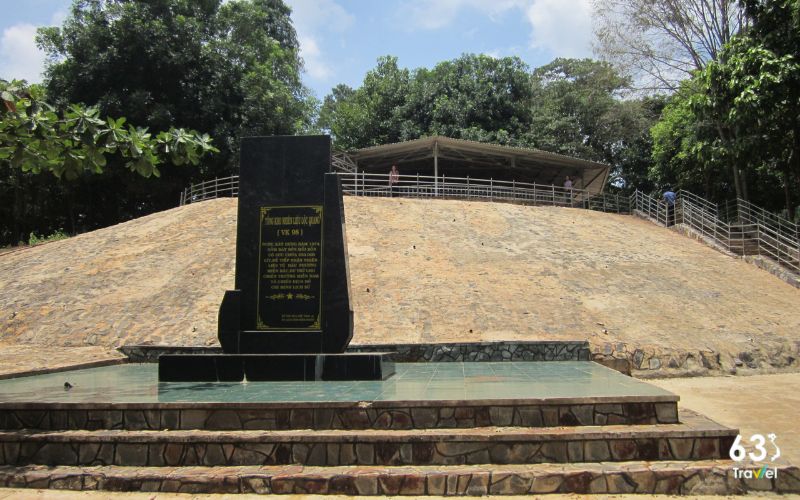
VK98 fuel storage tank
This relic is not only a historical stop but also made its mark in the resistance war, making an important contribution to the Ho Chi Minh Campaign. Today, the VK98 Gas Tank - Fuel Warehouse relic has become a place to learn about the petroleum system during the anti-American period.
With outstanding historical value, the monument was recognized as a national historical site on April 21, 1989. And it was ranked as a special country on December 9, 2013, affirming its important role in the flow of national history.
Cu Lao Rua archaeological site
Cu Lao Rua archaeological relic site, also known as Cu Lao Thanh Hoi. Located between the flow of two branches of Dong Nai river, this monument has an area of 277 hectares and is surrounded by charming river landscape.
Discovered in 1888, Cu Lao Rua is one of the most important archaeological sites in the Southeast. French researchers have excavated and published findings about cultures dating back 3,000 to 3,500 years ago.
Through excavations in the late 20th and early 21st centuries, many relics such as stone tools, pottery and jewelry were found, showing that the ancient people here developed a civilization. rich culture. In particular, products such as curved hoe blades and high-legged ceramic bowls with sophisticated patterns prove that they have advanced manufacturing techniques.
Cu Lao Rua is not only a valuable cultural heritage but also makes an important contribution to the study of prehistoric history and culture of the Southeast region. The findings from the 2003 excavation continue to enrich the treasure of knowledge about ancient cultural history, supporting the economic and cultural development and preservation of Vietnam's cultural heritage.
End point of petroleum pipeline VK96
Relics The end point of the VK96 petroleum pipeline is located in Bu Gia Map commune, Bu Gia Map district, Binh Phuoc province, belonging to the special national relic system of Truong Son - Ho Chi Minh Road. This is an important part of the bridge between the Northern rear and the Southern front line in the resistance war against the US.
From 1968 to 1975, a petroleum pipeline system more than 5,000 km long was formed, meeting essential needs for the war. On March 14, 1975, petroleum arrived at VK96 General Warehouse, from there it was secretly transported to VK98 and VK99 warehouses in Loc Ninh, serving the battlefields, especially during the Ho Chi Minh Campaign. contributed to the victory in liberating the South.
The relic still preserves six gasoline tank burial pits and oil pipelines, located about 500m from the patrol road of Bu Gia Map National Park. The tank burial pits are rectangular, measuring 4-5m in width, 8-12m in length and 1-2m in depth, forming an important petroleum pipeline system for the campaign.
The end of the VK96 pipeline is not only a place to gather petroleum but also marks the silent efforts of Truong Son soldiers and petroleum soldiers in the resistance war. With outstanding historical value, this relic was recognized by the Prime Minister as a special national relic on December 9, 2013.
Betel Garden revolutionary relic area
Vuon Trau revolutionary relic site is located in Dong Ba Ba hamlet, Long Hoa commune, Dau Tieng district, Binh Duong province, about 5 km from Long Hoa commune People's Committee in the direction of Long Tan commune. This is one of the important historical points of the South during the resistance war against the US, along with relics such as Kien An forest and the Ho Chi Minh Campaign Forward Command Post.
Betel Garden was once a strategic base, the place that marked the birth of Phu Loi Battalion, the first armed battalion of Binh Duong province. With 500 officers and soldiers, this battalion made many important contributions during the war, contributing to the victory in the spring of 1975, liberating the South.
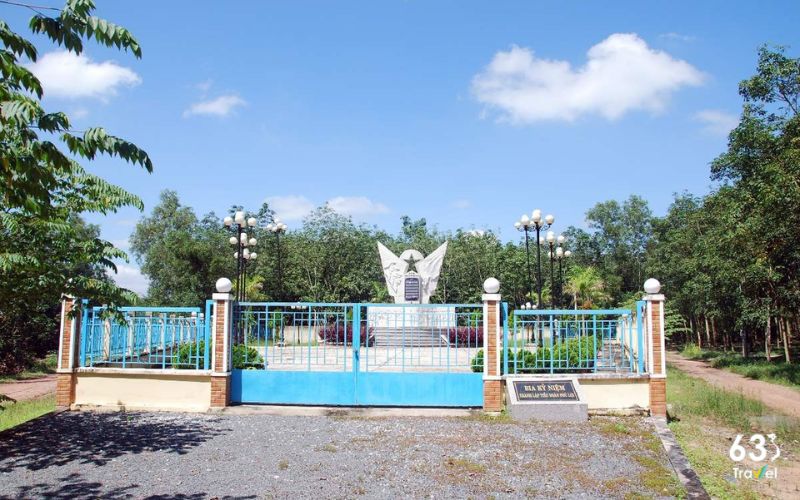
Betel Garden revolutionary base area
Phu Loi Battalion participated in many prominent battles, such as the Dong So battle (December 28, 1964), the victory at Dong Cheo base and the ambush that destroyed the 2nd Battalion of the 8th Regiment on July 8, 2019. 1965, confiscated many weapons and captured dozens of prisoners of war.
For its outstanding victories, Phu Loi Battalion was awarded the title of Hero of the People's Armed Forces on August 30, 1995. On December 17, 2009, the Betel Garden relic site was classified as a provincial historical site and a memorial stele was built to remember the sacrifices and achievements of generations of soldiers, conveying pride. proud to future generations.
Thus, the above article shares information about 19 long-standing and famous Binh Phuoc historical sites that tourists can explore. Please save it if you have the opportunity to visit this land!
Binh Phuoc
5482 view
Update day
: 25/09/2024
63 Stravel
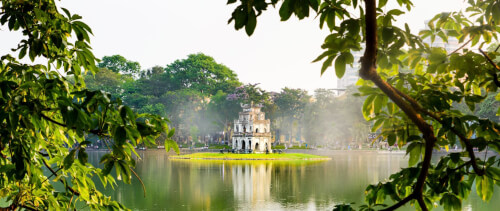 Hanoi (6)
Hanoi (6)
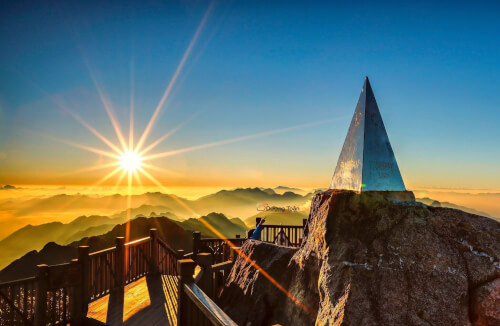 Lao Cai (1)
Lao Cai (1)
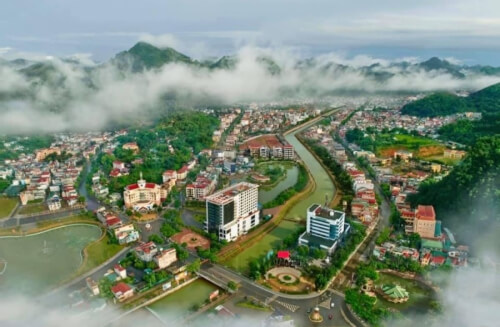 Son La (2)
Son La (2)
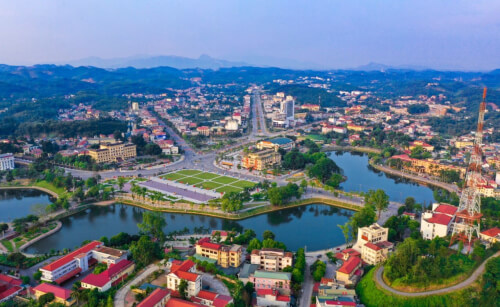 Yen Bai (1)
Yen Bai (1)
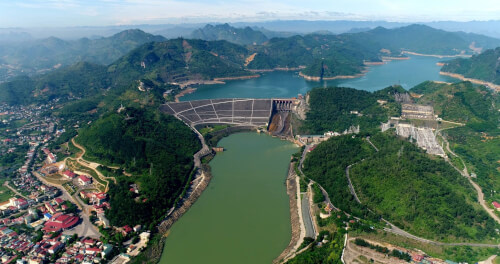 Hoa Binh (1)
Hoa Binh (1)
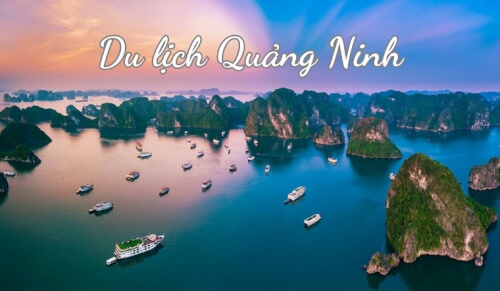 Quang Ninh (18)
Quang Ninh (18)
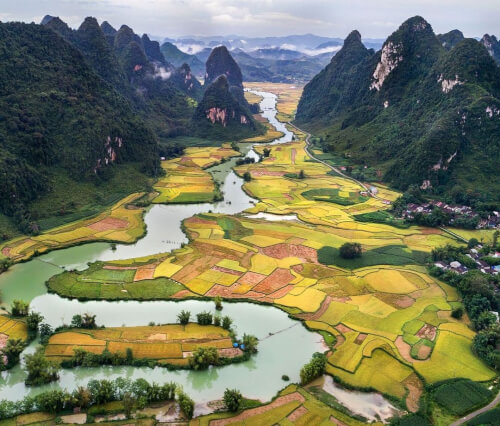 Ninh Binh (1)
Ninh Binh (1)
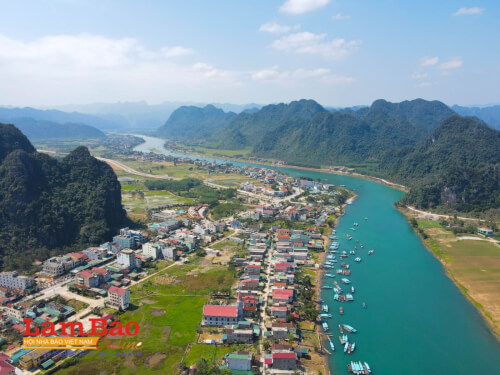 Quang Binh (2)
Quang Binh (2)
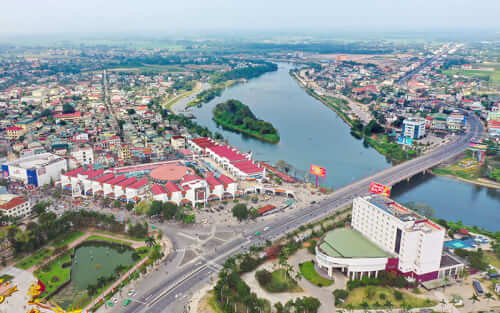 Quang Tri (1)
Quang Tri (1)
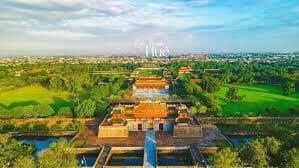 Hue (17)
Hue (17)
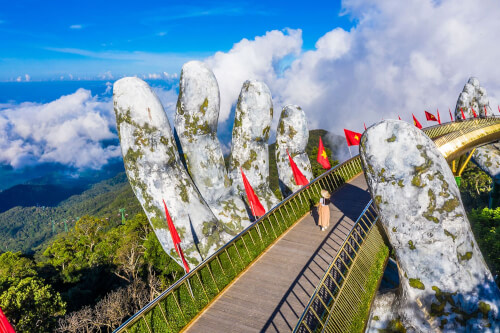 Da Nang (24)
Da Nang (24)
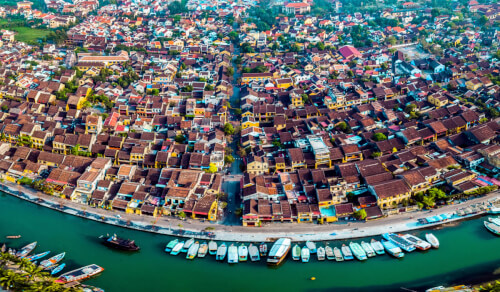 Quang Nam (16)
Quang Nam (16)
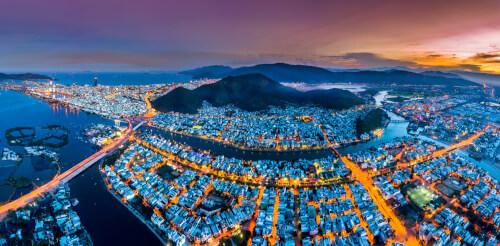 Binh Dinh (1)
Binh Dinh (1)
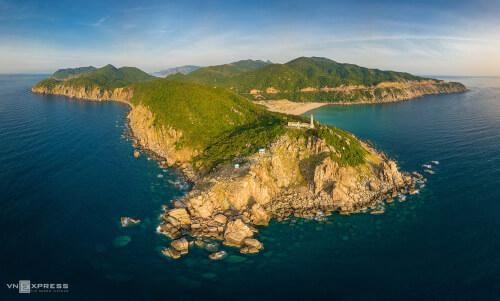 Phu Yen (1)
Phu Yen (1)
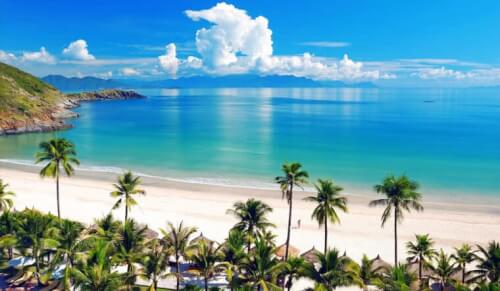 Khanh Hoa (12)
Khanh Hoa (12)
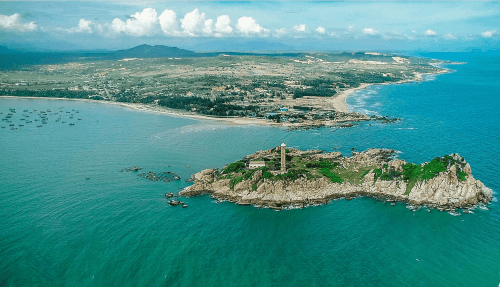 Binh Thuan (1)
Binh Thuan (1)
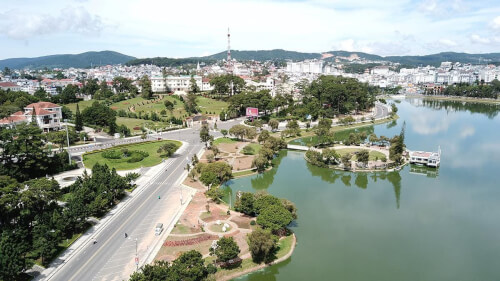 Lam Dong (7)
Lam Dong (7)
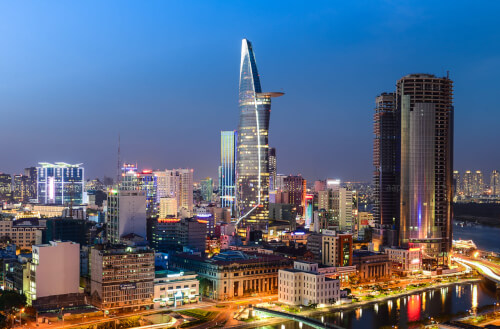 Ho Chi Minh City (3)
Ho Chi Minh City (3)
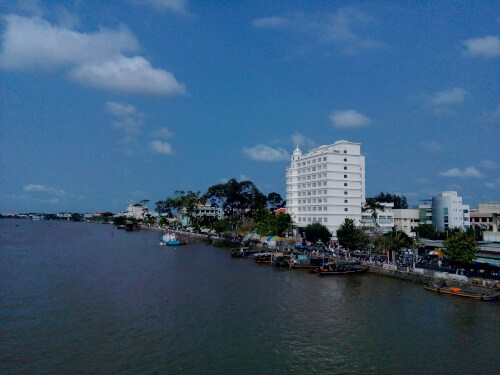 Ben tre (3)
Ben tre (3)
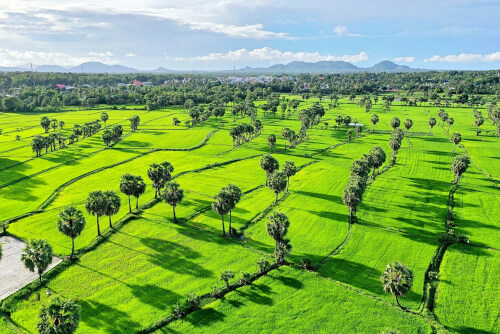 An Giang (1)
An Giang (1)
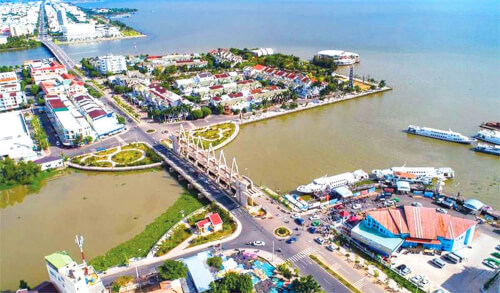 Kien Giang (4)
Kien Giang (4)
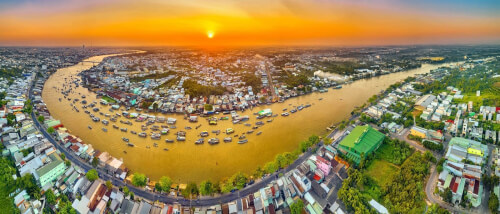 Can Tho (3)
Can Tho (3)
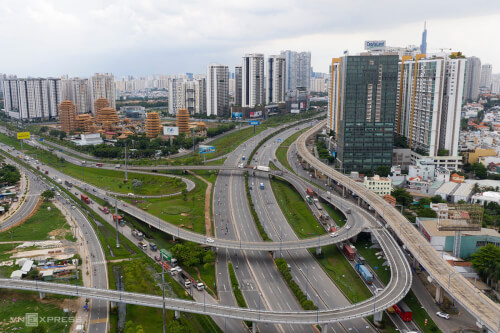 Foreign (3)
Foreign (3)

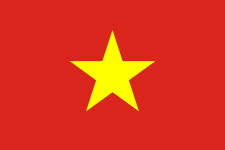 vn
vn en
en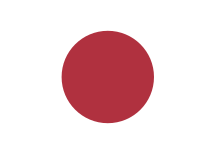 ja
ja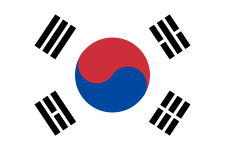 ko
ko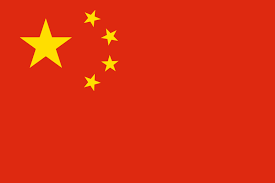 zh
zh


















